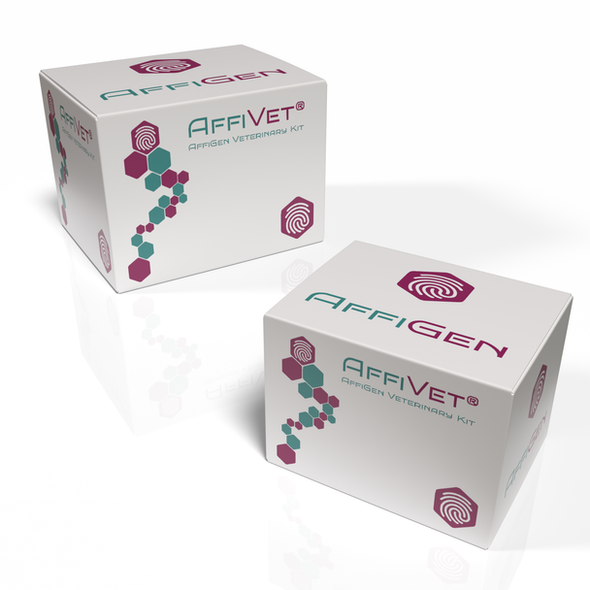AffiVET® FMD Type O Antigen Rapid Test Card For Bovine, Goat And Porince
- SKU:
- AFG-VGS-30
- Method:
- Rapid Test
- Size:
- 40 Tests/kit
- Species:
- Ruminants
- Specimen:
- Serum
Description
Classical Swine Fever Virus antibody ELISAtestKit
1.Usage
The Green® Classical Swine Fever Virus(CSFV) antibody ELISA Test kit is used for detection of Classical Swine Fever Virus antibody in porcine serum; assessment of immunity conditions against Classical Swine Fever Virus in the pig farm and investigation of the epidemiology of the Classical Swine Fever Virus.
2. Principle
The Green® Classical Swine Fever Virus(CSFV) antibody ELISA test kit is made from the antigen coated microtiter plate(coated with CSFV antigen) and other reagents. It applies the Solid-phase ELISA principle to CSFV-Ab in serum, then add enzyme conjugate to specifically bind with complex of coated antigen+CSFV-Ab+enzyme labeled anti-pig-IgG antibody on the microplate. With the TMB substrate, it will generate an amount of color. The depth of color is relative with the content of the CSFV-Ab, when the value of color is greater than the cut-off value, the pigs are vaccinated well or natural infected exist.
3. The kit components
| 1 | CSFV antigen coated microplate | 96T X 2 | |
| 2 | Enzyme conjugate | 22ml | yellow lid |
| 3 | Sample diluent solution | 50ml | transparent lid |
| 4 | CSFV-IgGNegativecontrol serum | 1.5ml | green lid |
| 5 | CSFV-IgGPositivecontrol serum | 1.5ml | red lid |
| 6 | Substrate | 12ml X2 | orange lid |
| 7 | Stop solution | 12ml | blue lid |
| 8 | 20×concentrated washing buffer | 50ml | white lid |
| 9 | Adhesive Foil | 2 pieces |
|
| 10 | Instruction | 1 piece |
|
4. Materials Required But Not Provided
1 Microplate Reader (double-wave length: 450/630 nm).
2 Precise micropipette (single-channel 1-100ul、0.5-10ul、multi-channel 30-300ul)
3 Constant temperature box or water bath box.
4 Oscillator.
5 Microplate Washer.
6 Disposable tips (10ul, 200ul)
7 Deionized water
5. Sample requirement
1 The samples are porcine serum, which should be collected with no bacteria. The storage time should be less than 1 week at 2-8 ℃, if for long term, it should be kept at -20℃.
2 Avoid to use the samples with severe hemolysis, precipitate, contaminated by bacteria or protein suspension.
3 The EDTA, heparin sodiun and other anticoagulants will not affect the results.
6. Preparation
1) Bring ELISA reagents to the room temperature (20-25 ℃) for 30 min to get best results. Microplate should return to room temperature and dry before open package.
2) Sample dilute: Dilute sample with the sample diluent solution at 40 times.(5ul serum + 195ul sample diluent solution), the diluted sample need to mix evenly to get better results.
3) Washing buffer preparation: Dilute the 20×concentrated washing buffer with deionized water at 20 times. (For example: 1ml 20×concentrated washing buffer + 19ml deionized water ) Make the crystals completely dissolved before use. The diluted washing buffer can store for 7-10 days at 2~8℃.
7.Procedure
1 Take out the coated plates (Can be detached) and record the sample position on a worksheet. Set 2 wells for negative control serum, add undiluted negative control serum, 2 wells for positive control serum, add undiluted positive control serum, 100μL/well. Others are sample wells, add the diluted sample, 100μL each(Both single-well and double-well test is OK).
2 Mix gently, cover andincubate at 37℃ for 30 min.
3 Remove adhesive foil. Pour the liquid out of the wells, add the diluted Washing buffer into each well fully, be static for 10s,pour out. Repeat 3 times, at last time pat to dry on absorbent paper.
4 Add 100μL enzyme conjugate into each well.
5 Cover plate with new adhesive foil.Incubate at 37 ℃ for30 min.
6 Repeat step 3(washing).
7 Add substrate 100ul into each well, mix properly,incubate for 10 min at37 ℃ in the dark.
8 Add stop solution 50μL into each well, mix gently and determine the result.
9 Measure the OD value of each well with a photometer at dual-wave length 450nm/630nm.
8.Results
For the assay to be valid, the positive control wells’ average OD value must be greater than or equal to 1.0, and the negative control wells’ average OD value is less than 0.1. Otherwise the test is invalid, need test again.
The result is judged by S/P value,
S/P=(Sample OD450/630- NCx(—))/( PCx(—)- NCx(—)), NCx(—) means Negative control’s average OD450/630 value(calculate as 0.05 when the value is less than 0.05), PCx(—) means Positive control’s average OD450/630 value
If S/P≥0.25, it is positive; less than 0.25, it is negative.
9. Precautions and warnings for users
1. This test kit is for research use only..
2. Do not use reagents expired, do not mix reagents from different lots.
3. Read the Manual carefully before use.
4. Experiment rubbish should be dealt with high pressure steam sterilization at 121 ℃ for 30 minutes, or treated with 5.0g/L sodium hypochlorite disinfectant for 30 minutes, then discard.
5. MicroWell plate removed from the refrigerated environment should be balanced moisture to dry at room temperature, then can be opened. Put back unused MicroWell plate into dry foil bag and sealed at 4 ℃. Unused liquid reagent should cover caps, store at 2-8 ℃ in dark with other group components.
6. Should use Micropipettor to add sample and reagents, and often proof its accuracy.
7. When adding washing buffer, should be full but no overflow, avoid appearing free enzyme at mouth of well or cross pollution between wells.
8. Stop solution is corrosive, use large amount of water to wash immediately when touch the skin or clothes.
Specifications:96 wells×2.
Expiry date:12 months.
Storage:Store at 2~8℃, in the dark.
Production Date:On outer-packing of the test kit.






